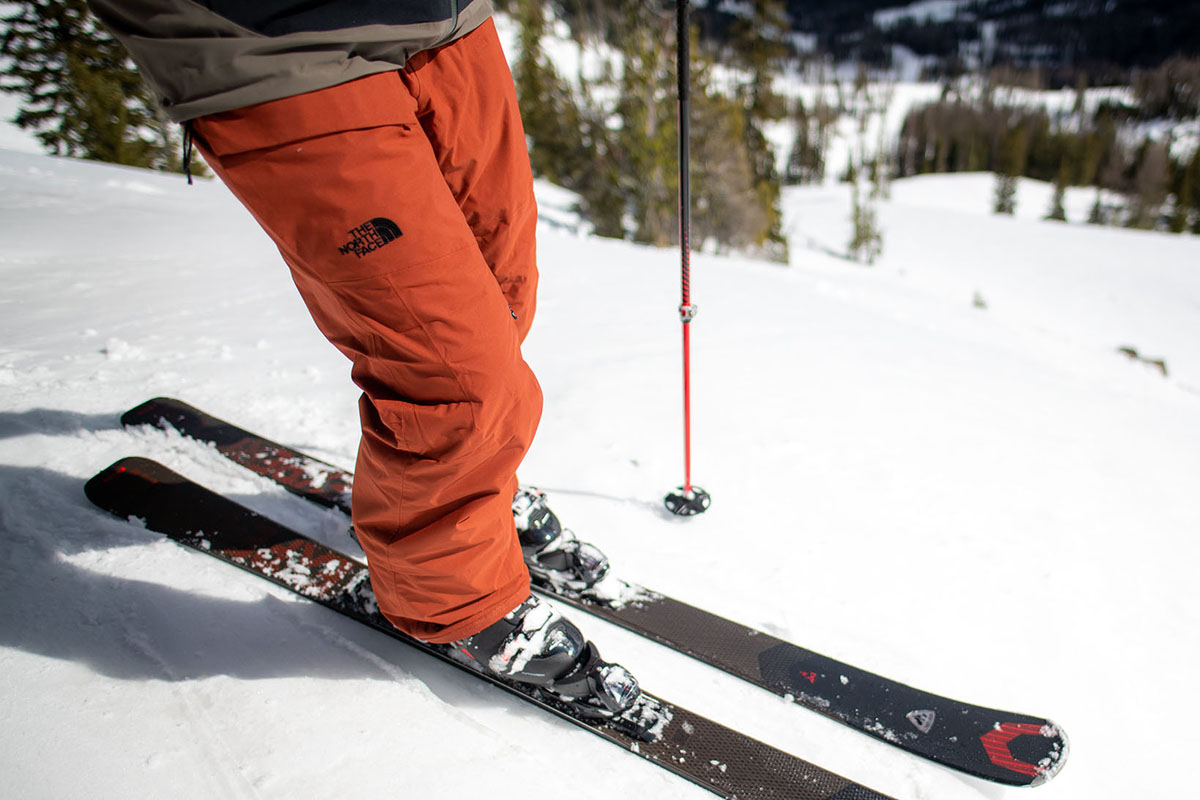

Price: $200
Waterproofing: 2L DryVent with DWR Finish
Insulation: 60g Heatseeker Eco
What we like: Excellent price for a well-rounded, comfortable, and warm resort design.
What we don’t: Not a standout in very wet conditions; semi-bulky construction impacts mobility.
See the Men's TNF Freedom Insulated See the Women's TNF Freedom Insulated
Easily one of the most popular ski and snowboard pants on the mountain, The North Face’s Freedom Insulated hits a very desirable mix of price, comfort, protection, and warmth. The budget-focused design has some limitations—namely, a step down in waterproofing from high-end models and a semi-bulky fit and feel—but it’s overall a tremendous value. For occasional riders, those just starting out, or if you simply don’t want to blow your budget on pants, it’s an excellent choice. We’ve tested multiple pairs of the Freedom pants over the years, and below we break down our experiences. To see how they stack up to the competition, check out our articles on the best ski pants and best snowboard pants.
Considering its affordability and in-house 2-layer build, The North Face Freedom Insulated Pants offer solid and reliable weather protection. I’ve subjected them to just about all imaginable conditions—from deep powder to sleet and even rain on particularly rough Pacific Northwest days—and they have far exceeded expectations given the $200 price tag. The burly construction is very effective at blocking wind, and a durable water repellent (DWR) coating helps shed snow and keep even moderate levels of moisture from absorbing into the nylon exterior. Finally, you get full seam sealing for additional protection, although there are a few areas of vulnerability (more on this below). All told, we haven’t found a better, longer-lasting waterproof design at this price point, which truly is high praise.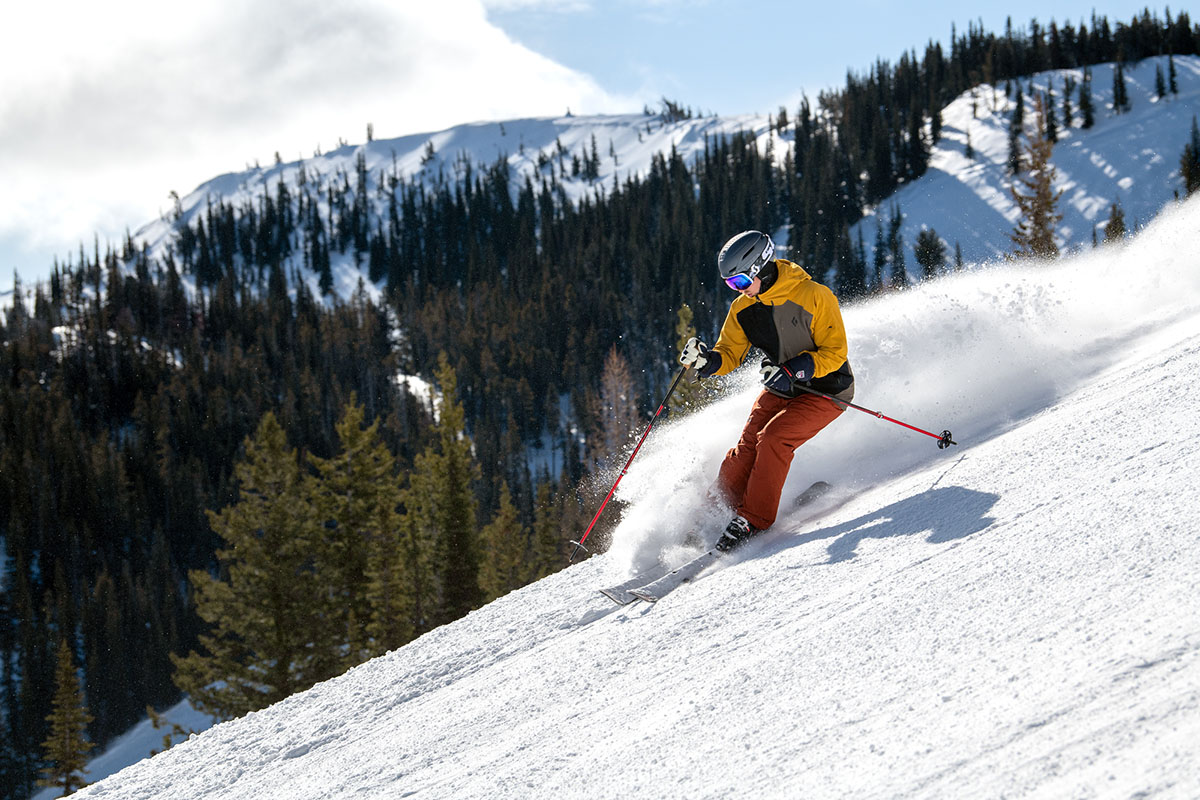
As mentioned above, however, there are a few protection-related compromises to the Freedom’s budget-friendly design. First and foremost, the exterior fabric will start absorbing a fair amount of water in heavy and particularly wet snow. The DWR coating can only hold out so long, and I've found that the pants begin feeling heavier as they start absorbing moisture (and don’t expect them to dry out until you’ve called it a day). In addition, all of the pocket and vent openings rely on fabric flaps for sealing out water—higher-end models often boast more protective and reliable coated zippers—so it’s best to not store valuables here. Given these downsides, some skiers will likely want to upgrade to maximize protection—including riders that get out a lot, those that like to explore the sidecountry or spend a lot of time in deep snow, and skiers who live in particularly wet climates (such as the Pacific Northwest).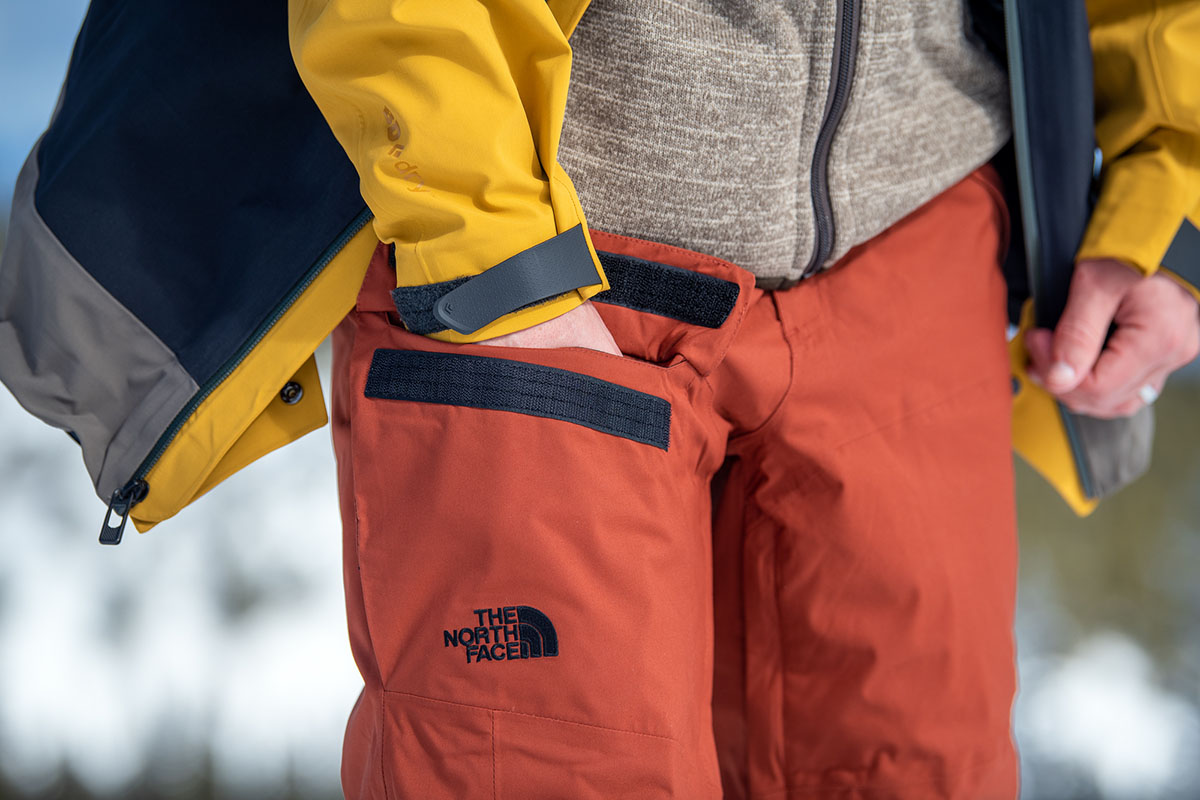
With 60-gram (g) synthetic Heatseeker Eco insulation throughout, The North Face Freedom is one of the warmer designs I’ve tested. I typically wore a lightweight baselayer underneath and found the pairing to be perfectly comfortable in temperatures ranging from the low 30s down to the low teens Fahrenheit. And on especially cold days—including plenty of sub-zero conditions when accounting for wind chill—the Freedom offered ample insulation to shield me from frigid gusts (not to mention the cold of the chairlift seat). This level of warmth does have compromises, which we cover below in “Breathability,” but if you mostly stick to groomers and your local conditions aren’t particularly mild, the Freedom is a great choice. And for those that prefer a non-insulated design, the standard Freedom will save you $30.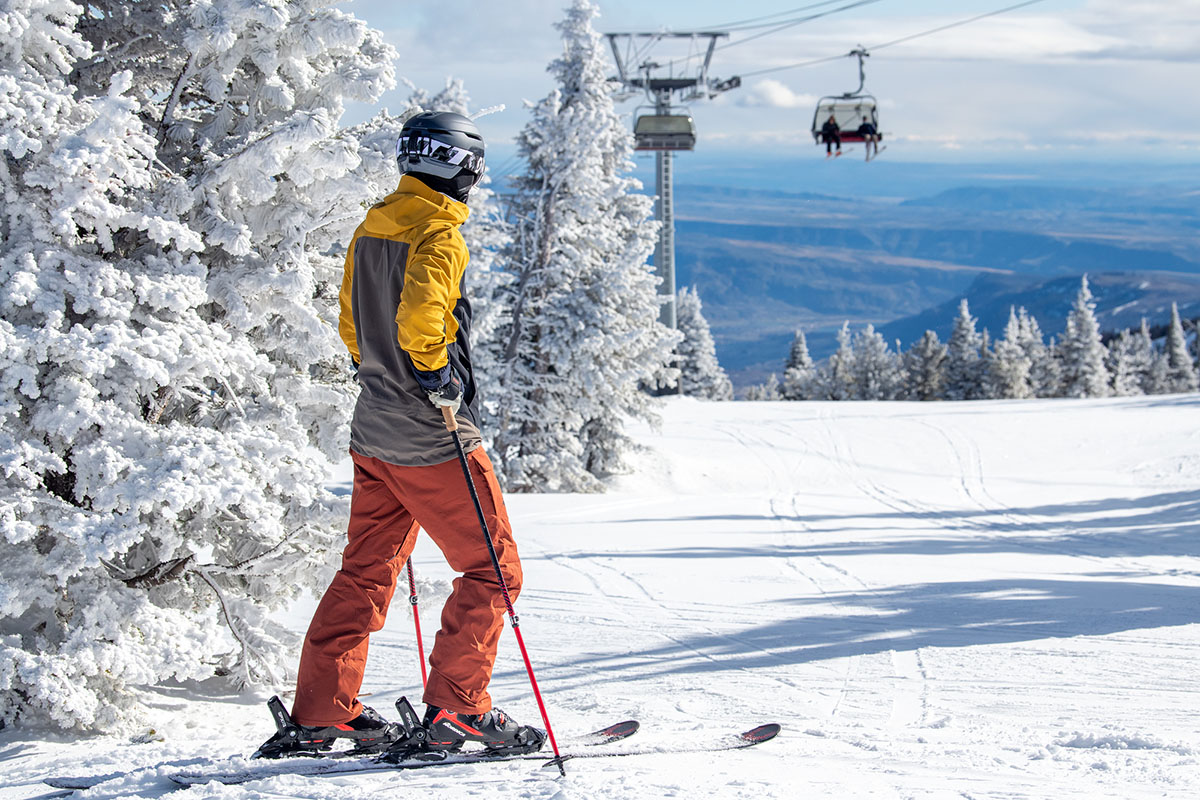
Another area where the Freedom outperforms its price tag is comfort. Featuring a surprisingly soft and supple exterior and smooth lining, the pant has the feel of a much higher-end design. There isn’t any stretch in the fabric—unlike the pricier Helly Hansen Legendary—but for most downhill uses, that’s not a big compromise. The only major downside is that it’s not particularly streamlined—you can blame the insulation and thick materials for that—so you can feel the added heft when hiking in the sidecountry or to and from your car. In addition, I found the crotch of the pant to be excessively long, which impacted uphill hiking. But in all other instances, I never noticed the extra bulk of the design.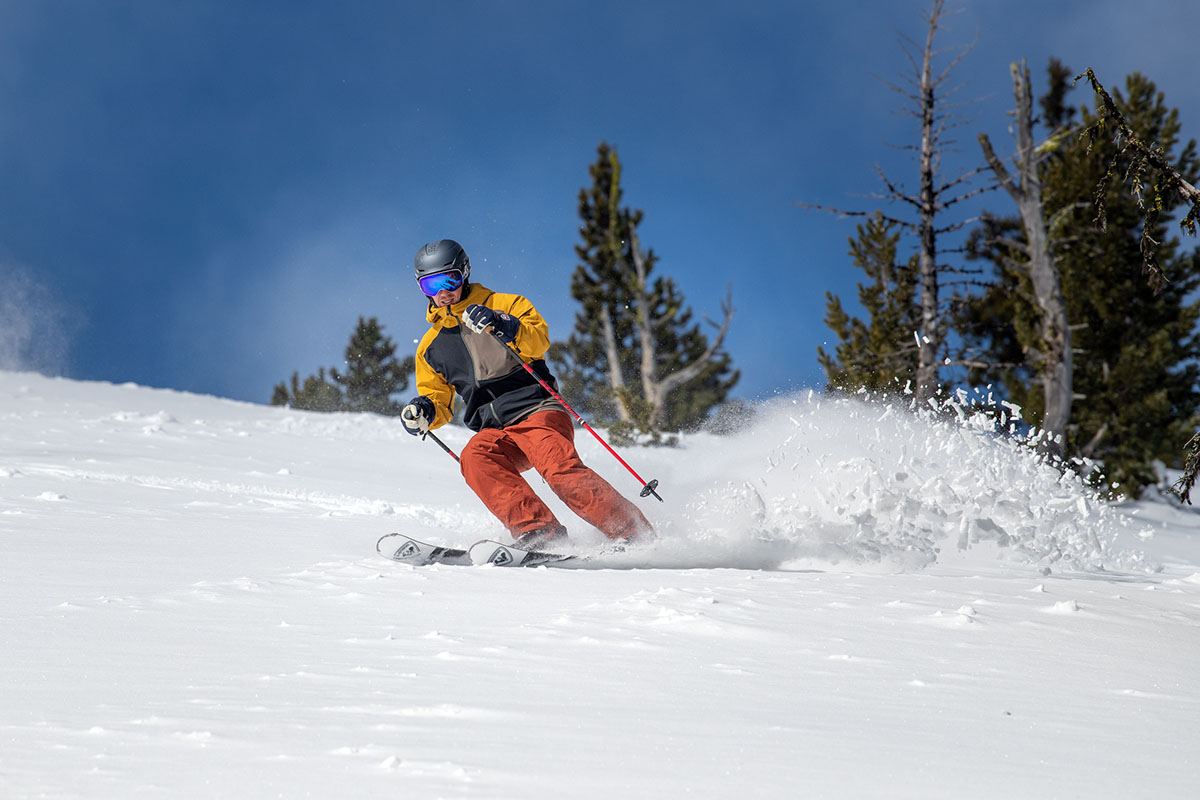
One notable sacrifice of The North Face Freedom’s warm and burly 2-layer construction is a drop in breathability. Simply put, it’s too much pant for active uses in mild temperatures, such as sidecountry hikes on late-season days. For reference, I found myself opening up the zippered inner thigh vents on occasion on sunny days with temperatures in the high 20s and left them open in spring-like conditions to help with airflow. In the end, if you’re prone to running hot or want a single pant for true season-long use, it’s probably best to stick to the non-insulated Freedom or a lighter insulated model such as the aforementioned Helly Hansen Legendary, which only has synthetic fill in a few areas.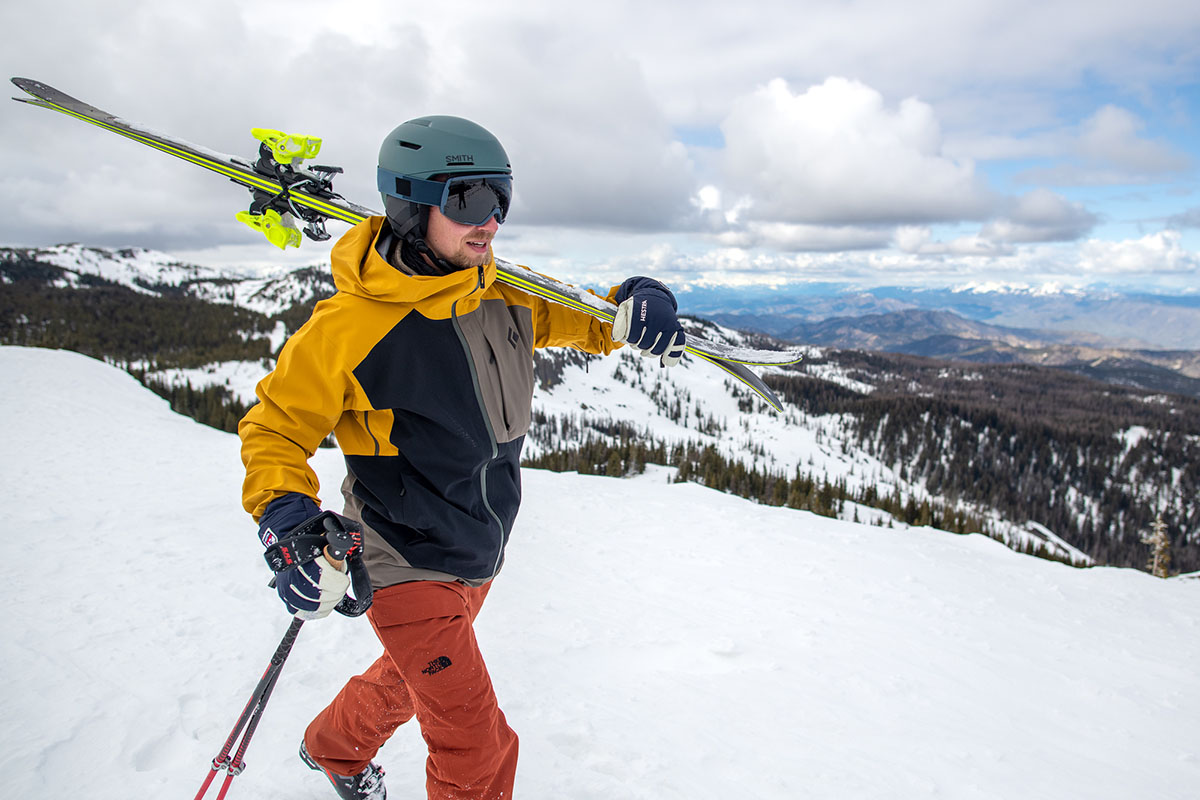
In terms of storage, the Freedom keeps things pretty simple with three total pockets, which was perfectly fine for me on resort days. The two zippered hand pockets are just large enough to completely cover my non-gloved hands, so they’re well-suited for smaller items like lip balm or keys. And a larger pocket along the right upper thigh is secured by a full-length strip of Velcro. This is a fine place to stash something like a wallet, but keep in mind that it’s less secure than a zipper closure. And a final note here: as mentioned above, these pockets are only moderately protective, so it’s best not to rely on them to keep valuables or electronics dry, especially on very wet days (I prefer to stow mine in my ski jacket or midlayer instead).
To help regulate your temperature in mild conditions, the Freedom boasts two zippered vents along the inner thighs. In practice, these are only mildly effective: the openings are fairly short (I measured them at 8 in.) and lined with mesh, which inhibits airflow. Plus, their placement means they’re far less effective at dumping heat quickly compared with vents placed on the outside of the leg. But to be fair, the design is pretty common among cheaper ski pants and still does the trick for moving some air. In other words, for resort riders that don’t do a lot of hiking and aren’t prone to overheating, the vents are a suitable solution.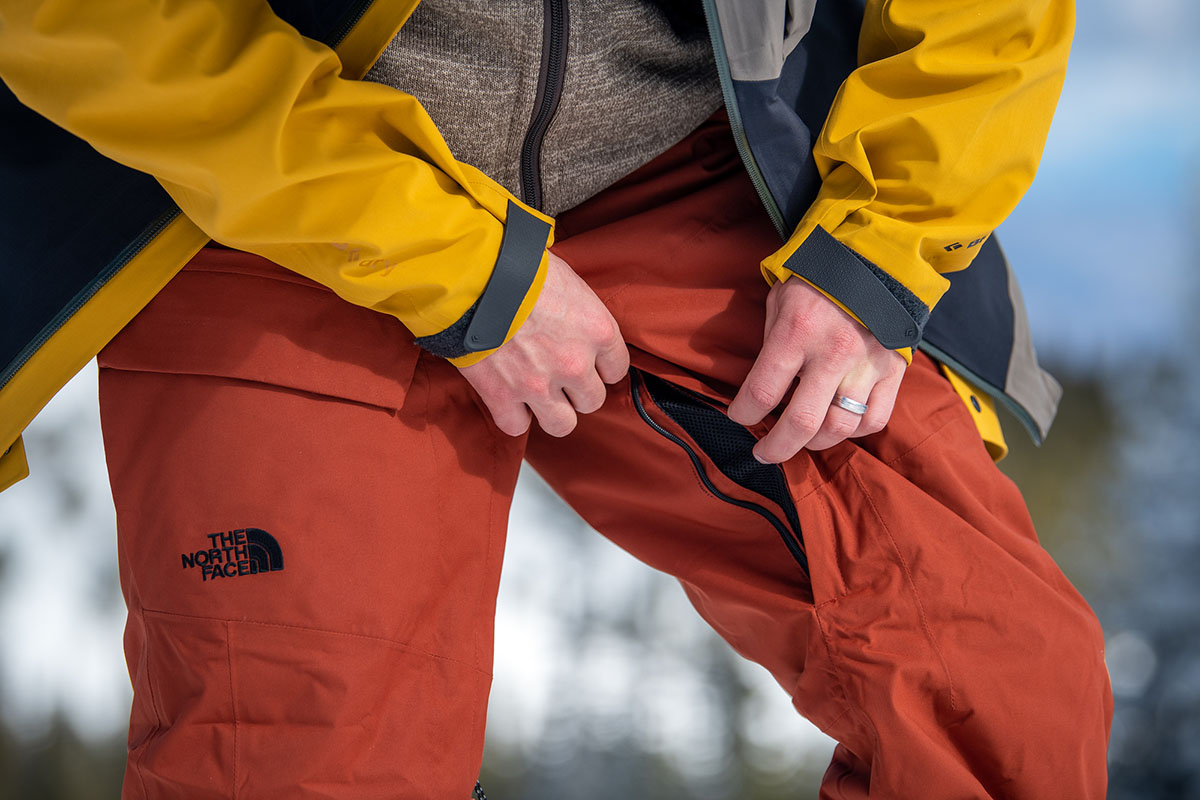
The North Face excels in the budget and mid-range categories of the ski apparel market, which is in large part thanks to the well-made Freedom collection. The design is long-lasting with a burly 160 x 140-denier (D) nylon shell—many are 100D or less, including the 75D Patagonia Snowshot—and The North Face included reinforcements along the inner ankle to guard against sharp ski or board edges and boot buckles. We’ve also found the DWR coating to be a pretty good performer, although ours did wear our quicker than some higher-end models, and I typically reapply the finish each season for added assurance (keeping up with washing helps with the coating’s longevity, too). And as I touched on previously, the soft exterior and smooth interior are reminiscent of a much pricier and more premium pant. Taken together, it’s hard to beat the Freedom’s bang for your buck.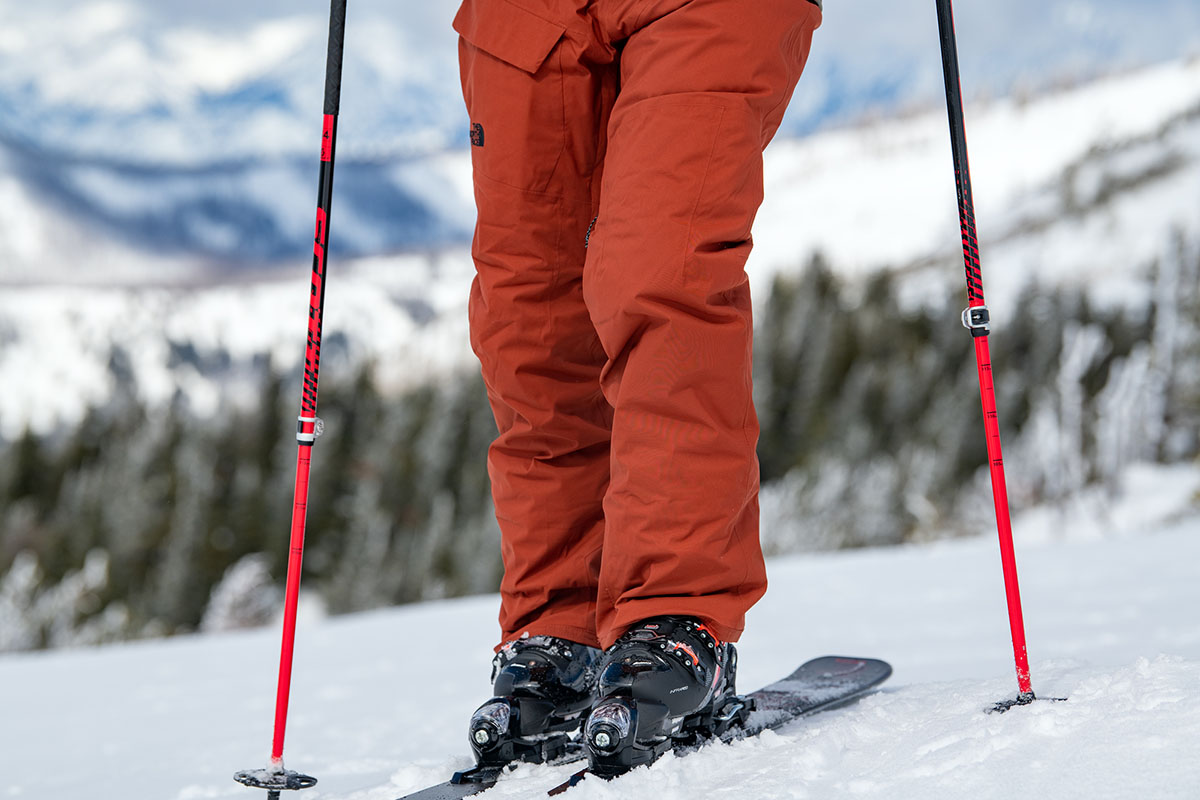
A big benefit to the best-selling Freedom Pant is that it’s offered in a number of waist and inseam options. With a 31-inch waist and 31-inch inseam, I opted for the “medium” size and “regular” length and found it to be a good match. There’s plenty of adjustability at the waist thanks to a Velcro adjustment at each side (I had mine cinched pretty far as I’m on the fence between small and medium), and the length was spot-on. Further, the cut of the pants is just on the baggy end of regular, which hits a sweet spot for a lot of skiers and boarders. With the thick insulation and shell, the Freedom is a little bulky for my tastes, but I only really noticed the added heft when hiking.
Many ski apparel brands have begun incorporating eco-conscious measures into their collections over the past several years, and The North Face follows suit with the latest update to their Freedom line. The pants tested here use recycled materials including a 57-percent-recycled nylon face fabric, 50-percent-recycled polyester insulation, and 100-percent-recycled polyester taffeta lining. The DWR coating is also free of perfluorocarbons (PFCs), which are known to be harmful to the environment. Added up, these measures only add to the pants’ all-around value and overall appeal.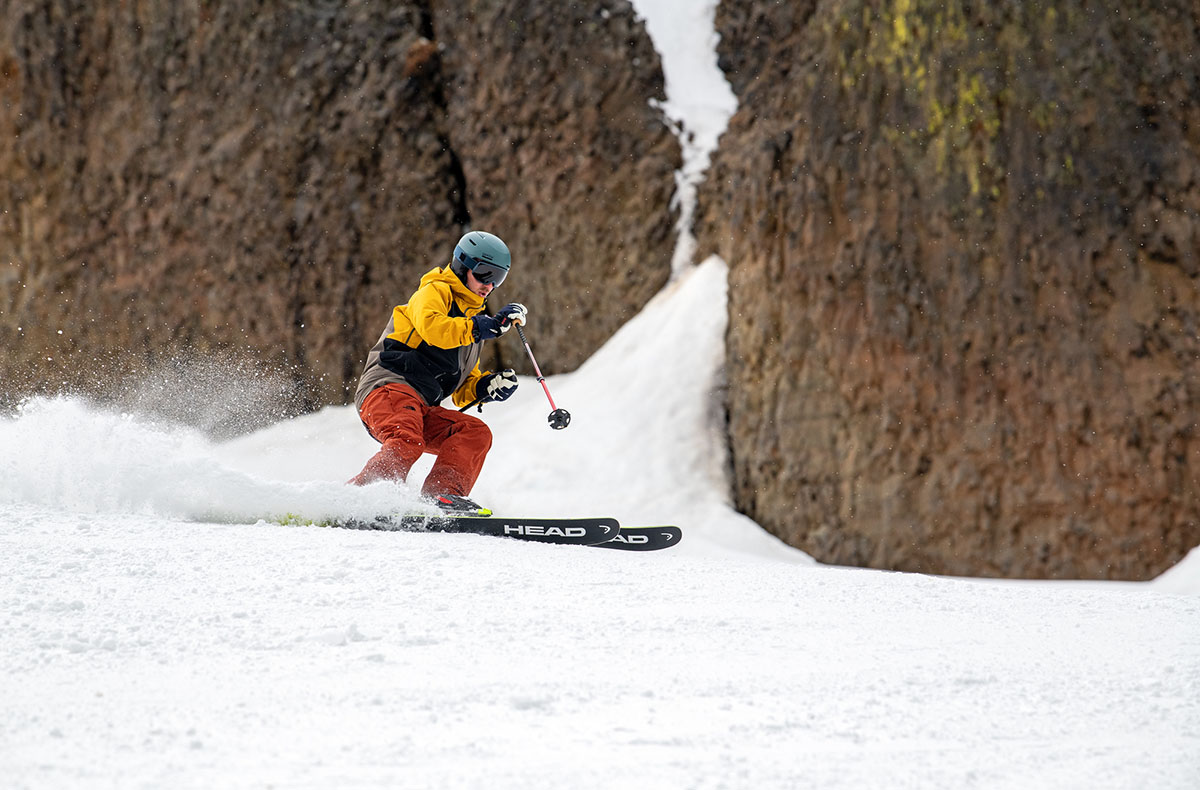
Given the popularity of the Freedom line, The North Face offers a dizzying number of variations. These include women’s models, full-coverage bibs, kids’ versions, and non-insulated offerings, as well as dedicated tall and short lengths for many of the options. If you run warm or plan to do a lot of sidecountry exploring, the non-insulated Freedom ($149) will save you some cash, weight, and bulk. For those who want additional coverage, the Freedom Bib ($199) is another intriguing alternative that boasts many of the same features as the version tested here but with better protection from the elements. It’s worth noting that some of the 2022 variations aren’t available online yet, but we expect them to hit the shelves shortly.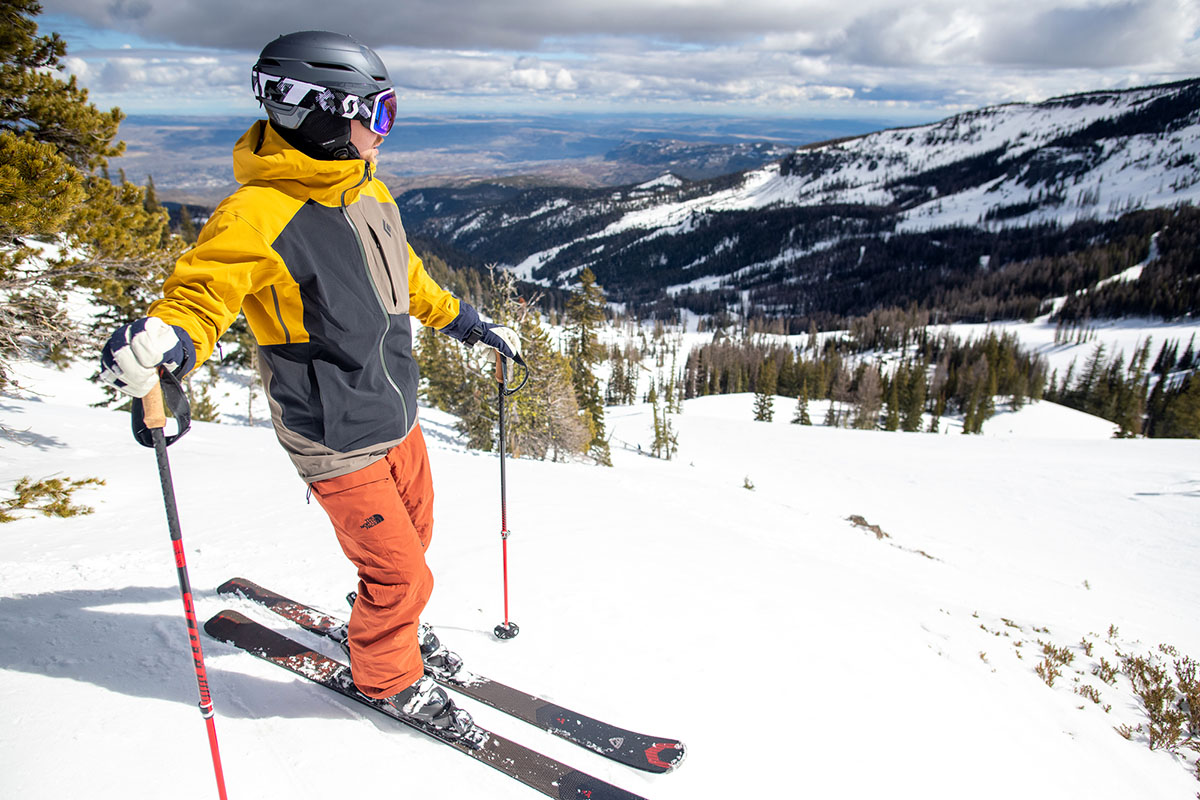
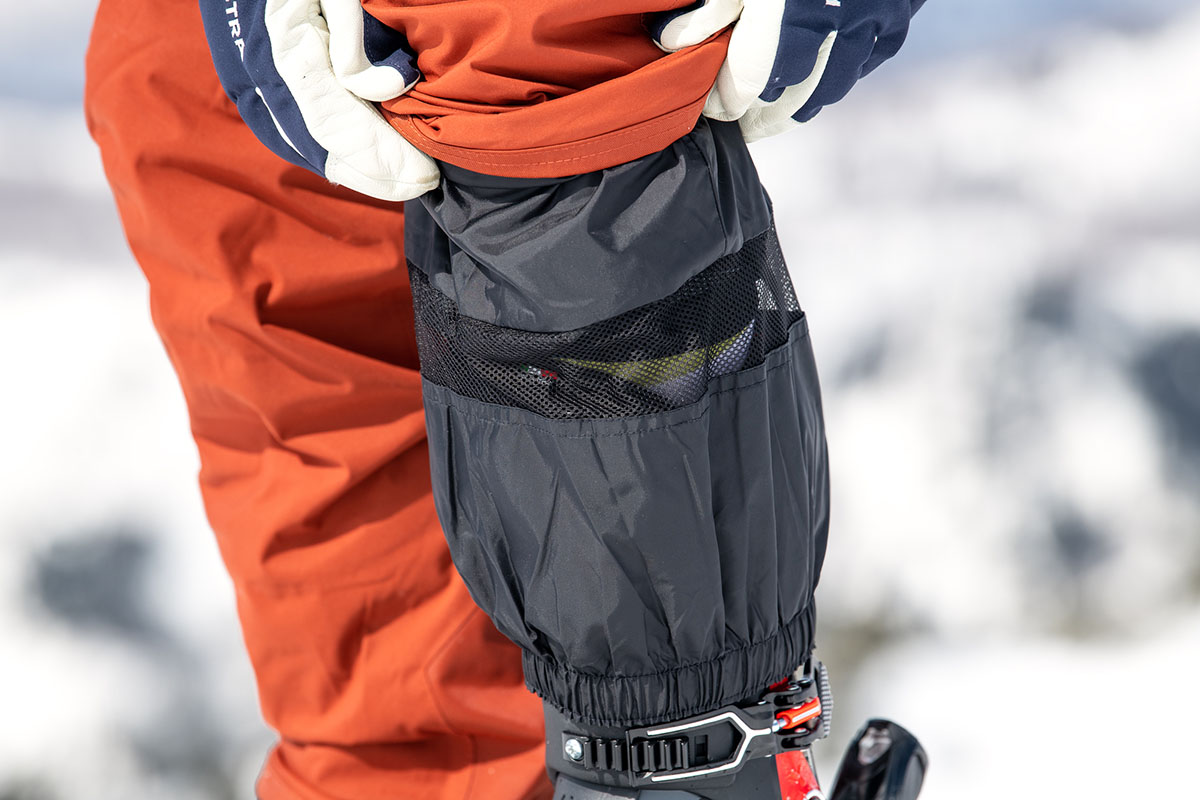
| Pant | Price | Category | Insulated | Fabric | Weight |
|---|---|---|---|---|---|
| The North Face Freedom | $200 | Hardshell | Yes (60g Heatseeker Eco) | 2-layer | 1 lb. 11.5 oz. |
| Helly Hansen Legendary | $200 | Hybrid hard/softshell | Yes (60g Primaloft Black) | 2-layer | 1 lb. 3.5 oz. |
| Patagonia Snowshot | $199 | Hardshell | No | 2-layer | 1 lb. 7.9 oz. |
| Columbia Bugaboo IV | $110 | Hardshell | Yes (60g Microtemp XF) | 2-layer | Unavailable |
| REI Co-op Powderbound | $159 | Hardshell | Yes (40g polyester) | 2-layer | 1 lb. 9.4 oz. |
The North Face’s Freedom is one of the most popular ski pants on the market and our favorite budget pick this season for its proven and tough design at an affordable price. Another top insulated resort model is Helly Hansen’s Legendary. In parsing out the differences, the Legendary is also $200 but includes two-way mechanical stretch for added comfort and range of motion, boasts a slightly trimmer “regular” fit, and has a thinner construction that’s more mobile and less bulky. That said, you do sacrifice some of the Freedom’s toughness, and the Helly Hansen is far less warm (it’s only insulated in a few spots, including the butt and knees). In the end, we’d break it down as follows: If value and warmth win out, the Freedom is hard to beat. For more committed skiers or those that want a little less insulation, the Legendary’s upgrades won’t disappoint.
Patagonia is one of the biggest names in ski apparel, so it comes as no surprise that they offer a very competitive alternative in their Snowshot Pants. Like the Legendary above, the Snowshot offers a step up performance-wise from the Freedom with higher-quality materials and a sizable bump in all-out protection, especially in very wet conditions (it uses Patagonia’s 2-layer H2No construction). However, the key difference is that the Snowshot is uninsulated, which adds versatility on mild days and means you’re less likely to overheat while working hard. 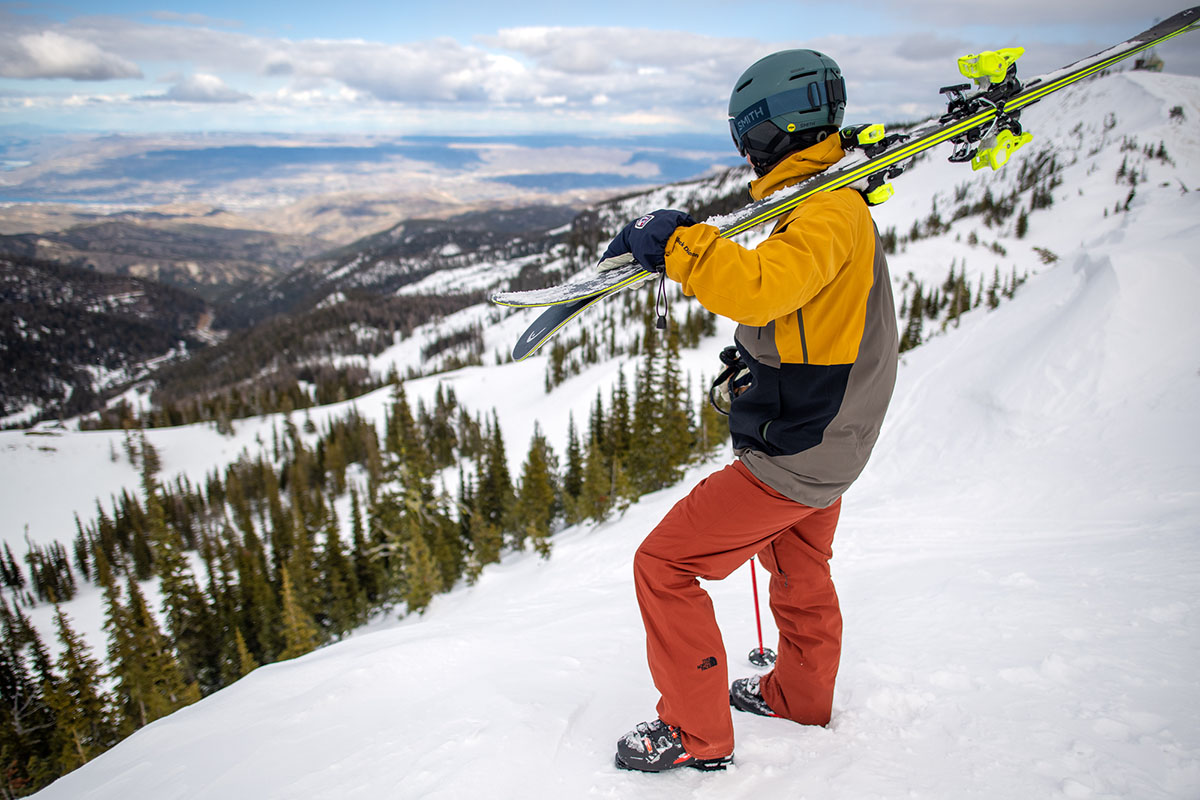
Next up is Columbia’s Bugaboo IV, which shares the Freedom’s resort-friendly and tough build. Both pants boast 60-gram synthetic insulation for warmth, have hardwearing exteriors that will stand up to regular inbounds use, and use in-house waterproof linings. In terms of differences, the Bugaboo is even cheaper at $110 but is only critically seam taped (the Freedom is fully seam sealed), which means that it’s more prone to wetting out in sustained moisture. The Columbia also lacks zippered vents for dumping heat, and overall build quality is a step down. These might not be deal-breakers for riders who only hit the slopes every so often, but committed resort-goers will likely be happy with the Freedom’s performance advantages.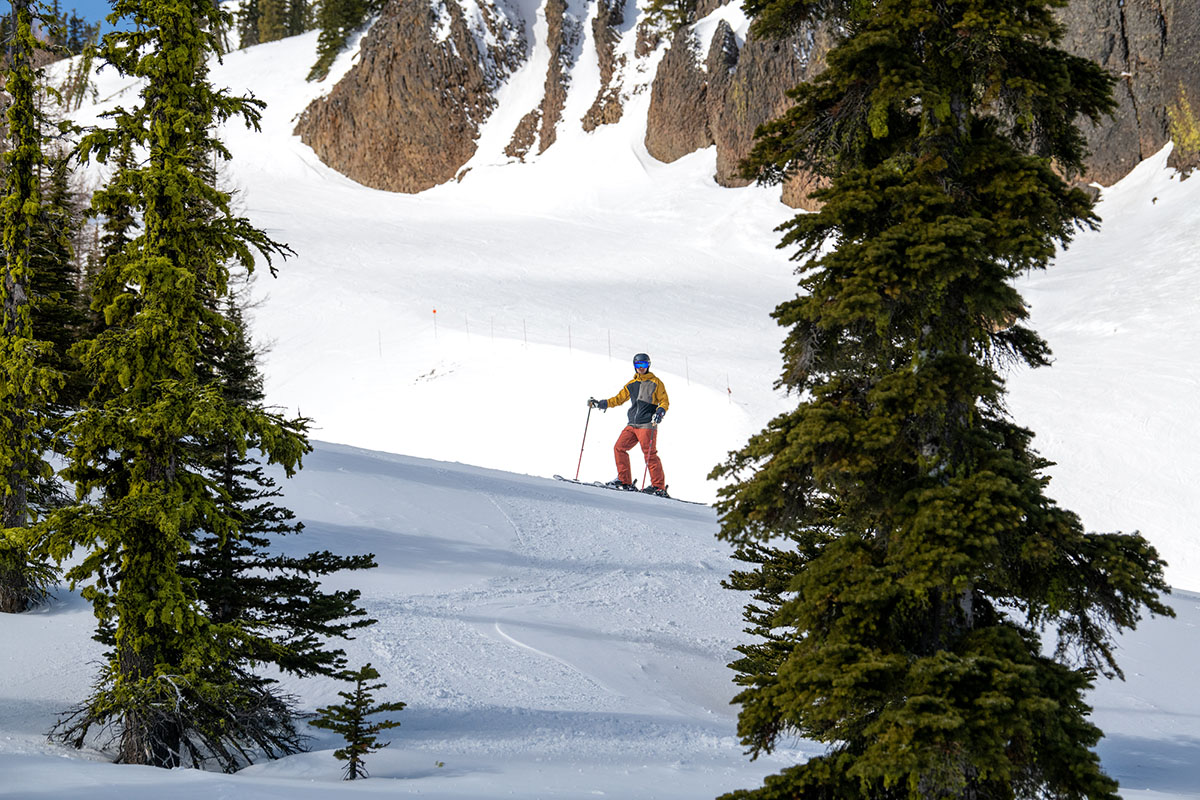
Last but not least is another intriguing budget offering: REI Co-op’s $159 Powderbound Insulated Snow Pants, which were a new entry for last season. Like the Freedom, the Powderbound uses an in-house 2-layer construction for waterproofing, boasts zippered thigh vents (although with no mesh in the openings), and comes with three total pockets. Where the REI gets the biggest edge is breathability: it's bit less insulated with 40g polyester fill, and the zippered vents mean it will dump heat better too. However, you miss out on the wide range of available colors and inseam lengths, and it’s far less proven over the long haul. Given these downsides, the Freedom still gets our vote despite the $41 difference in price.
If you’re thinking about buying gear that we’ve reviewed on Switchback Travel, you can help support us in the process. Just click on any of the seller links above, and if you make a purchase, we receive a small percentage of the transaction. The cost of the product is the same to you but this helps us continue to test and write about outdoor gear. Thanks and we appreciate your support!
Depending on the seller, most products ship free in the United States on orders of $50 or more. International shipping availability and rates vary by seller. The pricing information on this page is updated hourly but we are not responsible for inaccuracies.